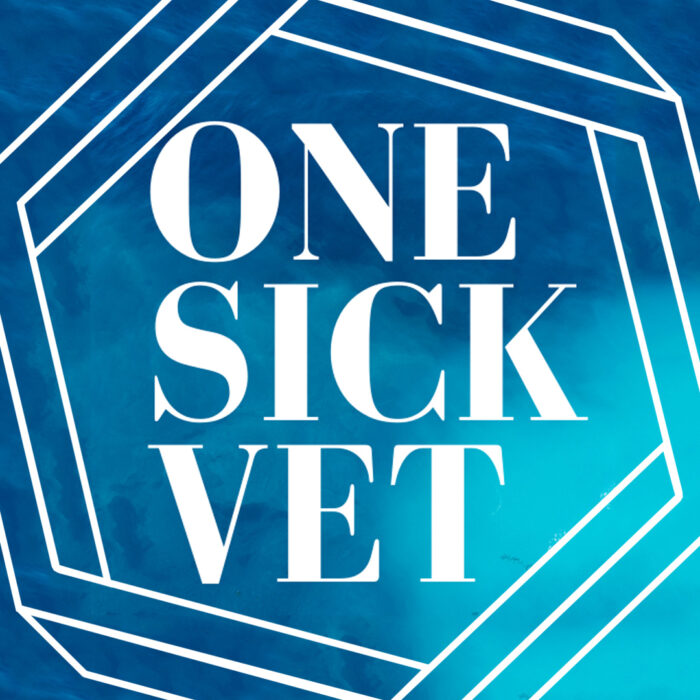74 – Crew Dog
Description
 </figure>
</figure>Crew Dog from One Sick Vet talks connective tissue, mast cell activation syndrome and veteran disability services.
Transcript
Brianne: I’m Brianne Benness and this is No End In Sight, a podcast about life with chronic illness.
[guitar riff]
Drew: Hey this is associate producer Drew Maar. Before we get started, we wanted to remind you that No End In Sight has a newsletter. It’s full of updates about twitter conversations happening in our hashtag #NEISVoid, book and article recommendations about chronic illness and disability, and links to new podcast episodes and miscellaneous other media. If you are comfortably able to support our work, there are paid options available, but all core content will be free. You can take a look at previous newsletters and subscribe over at NoEndInSight.substack.com. Today we’ll be talking with Crew Dog from One Sick Vet about connective tissue, mast cell activation syndrome and veteran disability services. A few content notes for this episode: There is talk of the military throughout this episode, including a mention of the Gulf War, Desert Storm, as well as 9/11 and the ensuing wars around thirty minutes in. And Crew Dog and Brianne refer to the pandemic a few times throughout the episode, but they do not talk about COVID or lockdown very extensively in this episode. Before we start, here’s our disclaimer: This podcast is not intended as a substitute for professional medical advice, diagnosis or treatment. Make sure you talk to your practitioner about any questions or symptoms.
[guitar riff]
Brianne: So I like to start just by asking people, how was your health as a kid?
Crew Dog: Which is an interesting question because like you, it’s a lot of retrospective work for me, and I would have always said that my health was excellent.
Brianne: Yeah.
Crew Dog: And I think that’s still a fairly accurate but what I’ve come to recognize is that primary parent is sort of in denial about health issues.
And so they always told us that everyone in our family had excellent health.
Brianne: And that’s how you knew, Right.
Crew Dog: So I really don’t have the same history of… that some chronically ill and disabled people do of not being able to do sports or having pain that prohibited me from doing things. I was a very active child, but I now believe that I have a connective tissue issue. And that… I can look back now on incidences where I got hurt and I was in pain and adults told me, “You don’t have any broken bones. So you’re fine.”
Brianne: Right, right. So there’s no pain cause. That’s the only way pain happens.
Crew Dog: Exactly, “If it’s not a broken bone, you have no pain. Go away. Shake it off.” But I can look at a significant incident when I was in about eighth grade. And at the time, at school in PE playing basketball, I received a very severe sprain to an ankle.
And, of course, we also didn’t have health care when I was a child. So there was a lot of things that we didn’t pursue care for. But it wasn’t until three, four years ago when I was working for… with a physical therapist for a different injury that I… you know, she sort of explained to me that there’s three ligaments that go across your ankle, and I’m now convinced that I ruptured one of them.
Brianne: Eugh!
Crew Dog: It was a sprain, but I think that I completely ruptured one of those ligaments. But we didn’t have healthcare. So I got an ACE bandage and crutches for a couple of weeks.
Brianne: Maybe some ice.
Crew Dog: And I spent a whole summer running and sort of trying to train my foot to go back into the correct position.
Because it wanted to cheat outward. So…
Brianne: The guard rails were off.
Crew Dog: Yeah. So I was very fortunate that I was able to be very active and do everything that I wanted to do physically as a child. But I do think that I was accumulating connective tissue damage all the way along, and it was never recognized or treated.
Brianne: Yep. I can see how that would happen. Oh, scared eyes. Yeah, and that is of course, very relatable to kind of look back and go, “Oh, those might’ve been significant injuries, but I wasn’t thinking about them that way at the time time, even if I was injured for weeks at a time or a month at a time.” I feel like there’s a piece of it that’s like… yeah, when you were a kid and if the people around you think it’s not a problem, then you’re like, “Okay, I guess it’s normal to do this,” or whatever it is. Especially if your condition is genetic and the people around you also had similar experiences. Yeah. Woof. Okay. So that was growing up.
You’re blissfully unaware of what might be potential damage to your connective tissue over time. Is there a time when… even in retrospect, because I know it can be hard to see these patterns when that started to change or when you started to notice either more or additional or more severe symptoms or did things happen… how did things happen?
Crew Dog: Specifically about connective tissue, it’s just been the past few years where it seems like it has just really accelerated and really become a limitation, but in between the blissful childhood ignorance and the, you know, “Pieces are falling off of me faster than I can glue them back on,” of my current existence…
Brianne: Yeah, the wheels are literally falling off of the bus now.
Crew Dog: Yes. I developed migraines.
Brianne: Okay.
Crew Dog: Right around the time that I was turning 30. And so obviously I was in the military. I had a very active, physically demanding career, separated from the military still thinking that I was fit and healthy, and then the migraines started.
And the first few years it was maybe one to three headaches a year, and I didn’t recognize them as migraines.
Brianne: And were they very long?
Crew Dog: No, they would be like one evening. I would have the worst headache I’ve ever had in my life, and I really never had headaches prior to that. And I was married at that time. Still am, but I’m saying it happened after I was married.
Brianne: Yeah.
Crew Dog: And so the two of us… neither of us knew what it was.
Brianne: Right. I would imagine, especially at the beginning, it would seem like an acute fluke, like, “Oh, last night was weird, but it’s gone now.” And then the second time you might kind of be like, “Oh, I think this happened before, but it was so long ago.” And then the third time, and you were like, “Oh no, is this a pattern?”
Crew Dog: Well, and they were so infrequent in the beginning that I was like, “I don’t know why I’m getting these headaches,” but it wasn’t even to where I was seeing a pattern yet.
And so I would say that my recognition of, “I’m not just a fit healthy, stereotypical abled person,” was when I had acute sudden onset vertigo.
Brianne: Oh, the worst.
Crew Dog: So I was literally sitting in the same chair that I’m sitting in right now and studying. I was doing a master’s degree and reading a book, and it felt like my brain did a cartwheel. And I just had this violent attack of vertigo.
Brianne: Yeah.
Crew Dog: But no headache. I just had what I now recognize is I just had the aura and no headache.
The vertigo was severe and persistent, and so that’s when I went to a doctor cause, yay, we had military healthcare, which is better than no healthcare.
Brianne: Right, yay, access.
Crew Dog: So that’s when I went to the doctor was like, “This is really weird. And what is it?” And to their credit, they did a full barrage of tests, seeing all the specialists, neuro, ENT, getting MRIs… and so at the end of the day, they were like, “Well, we’ve ruled out the weird tumor that you can get in your ear, and we’ve ruled out this and that, and you don’t have a brain tumor and everything else.”
And a lot of times migraine is a diagnosis of exclusion, so they were like, “Well, we’re diagnosing you with…” what they called at the time basilar type migraines and migraine-associated vertigo.
And that was kind of it. No treatment was ever offered for the vertigo.
And we started trying migraine meds, and that began the whole process of decades of trial and error and failure. So in my still early thirties was when, “Okay, now I have migraines, and I have vertigo,” and I started learning about possible triggers for migraine in the environment and in my diet and that’s when all the, “Yay, let’s mess around with things in your diet,” thing starts.
Brianne: Yeah, “Great news. You’re about to mess with your diet all the time and never stop thinking about it.”
Crew Dog: “For the rest of you







